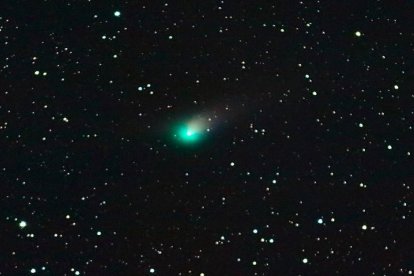How to see the green comet on its closest approach to Earth in 50,000 years
The sighting will be the first since the time of mammoths and Neanderthals and is considered one of the major astronomical events of the year.

Green Comet / Wikimedia Commons.
Starting this Wednesday, C/2022 E3 (ZTF), better known as "the green comet," will make its closest approach to Earth, allowing for its first sighting since 50,000 years ago when Neanderthals and mammoths still roamed the planet.
According to astronomy experts, the chunk of rock, ice, dust and gas will be visible as a green spot with a long tail without the use of binoculars or telescopes. It will pass within 26 million miles of the Earth's surface during the course of the night.
However, because the astronomical event is one of the most anticipated of this year, there will also be the option to see it on the Virtual Telescope Project website, which will transmit live images of the comet's flight. Seeing the green comet is a once-in-a-lifetime opportunity, the Planetary Society said.
Which way to look?
According to information from National Geographic, the Northern Hemisphere will have a better chance of seeing it. In fact, the media assures that the comet will appear in the northwest a little before sunrise.
Dr. Robert Massey, deputy chief executive of the British Royal Astronomical Society, suggested first looking for the north star, which is usually easy to identify by simply looking north and locating the star that stands alone in the sky.
Although the best day to see it will be Feb. 1, around February 10-11 it will pass by Mars and it will likely be visible again.
The comet should appear just to the right side of the North Star when the sky is darkest. "It is necessary that the sky is dark. This way the comet can be seen with binoculars and even with the naked eye," said Dirk Steinhauer, an expert from the Greifswald Observatory in Germany.
Why green?
According to the German Aerospace Center, the green color in comets is unusual, but this coloration is due to a reaction between the gas and the heat of the sun as it approaches. "Only the sun's heat makes the comet glow; without this glow, we would not be able to recognize it in the blackness of space," the DW indicated.
RECOMMENDATION





















